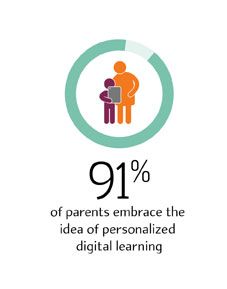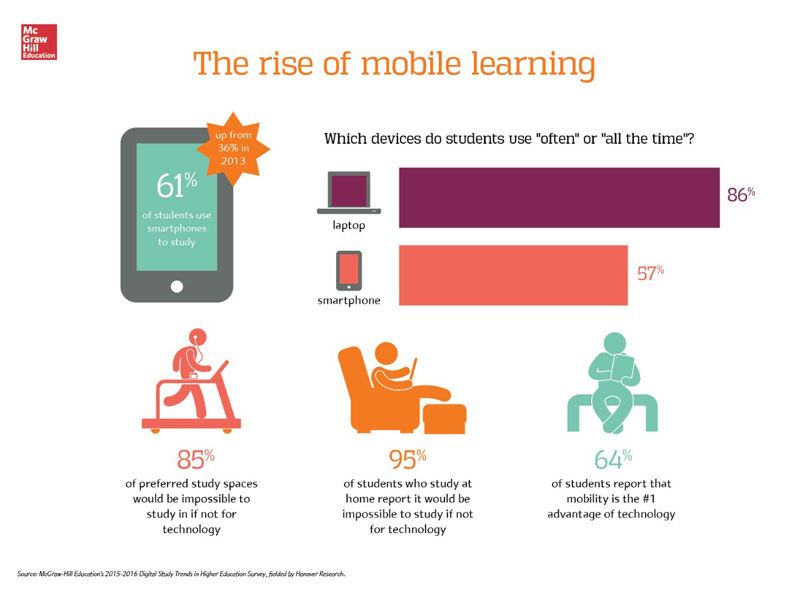My Account Details
Three Ed-Tech Trends Showing Why Mobile Learning is On the Rise
Changing attitudes about technology in school and at home have popularized mobile learning.
While the interaction between students and their instructors will always be key to the educational experience, the shift to digitally-driven learning models has made a significant impact on the culture and expectations for academic learning from early childhood on. Fueled by the rapid adoption of tablets and smartphones (which now outnumber people on Earth), mobile technology has become commonplace at all levels of teaching and learning.
As more classrooms integrate digital tools, the desire to leverage mobile tech to enhance learning has increased dramatically. From the obvious convenience of being portable to the more nuanced benefits on memory retention and achievement, there are many reasons why mobile learning has become so appealing. Here are three trends we've observed in 2015 that are shaping the future popularity and application of mobile ed-tech in and beyond the classroom.
Education apps are more popular, accessible, and sophisticated. While the earliest educational apps were mostly used for skill practice and review outside of the classroom, today's mobile apps are used for everything from practice and independent work to in-class instructional management and even assessment. "Education" is now the third most popular category in Apple's App Store, and the worldwide mobile learning market is projected to exceed $37 billion by 2020. In 2015 we revamped the mobile apps for our Connect and ALEKS platforms with enhanced adaptivity and analytics, more personalized content, offline access, push notifications, and redesigned mobile-first user experiences informed by exhaustive research of users' habits and preferences.
Parents want (and expect) the learning experience to be more personalized and flexible. An increasing proportion of today's parents of school-aged children have grown up surrounded by technology themselves. They want the schools their children to attend to leverage every educational advantage afforded by technologies such as adaptive learning and artificial intelligence. Millions of parents also use mobile apps and tools to communicate with teachers and monitor their children's activity in school. With location-based IoT technology showing increasing potential for educational purposes and over 90% of parents now embracing the idea of personalized digital learning, mobile teaching and studying tools continue to gain popularity across K-20 education.

Parents want (and expect) the learning experience to be more personalized and flexible. An increasing proportion of today's parents of school-aged children have grown up surrounded by technology themselves. They want the schools their children to attend to leverage every educational advantage afforded by technologies such as adaptive learning and artificial intelligence. Millions of parents also use mobile apps and tools to communicate with teachers and monitor their children's activity in school. With location-based IoT technology showing increasing potential for educational purposes and over 90% of parents now embracing the idea of personalized digital learning, mobile teaching and studying tools continue to gain popularity across K-20 education.

Students' learning habits and preferences are shifting toward digital. Our recent survey of digital trends in higher education revealed that more than 3/5 of college students now use mobile phones to study; most of them frequently. The same research revealed that 86% of students find that technology makes them more effective and efficient at academic tasks. While most students still find laptops to be the preferred option for studying, the demand for portable eBooks and mobile learning tools is rising faster than ever.
At McGraw-Hill we apply the power of learning science create mobile learning technologies that are nimble, easy-to-use, and effective for the teachers and students who rely on them. Visit Ideas in Education to learn more ways we're shaping the future of mobile learning technology.